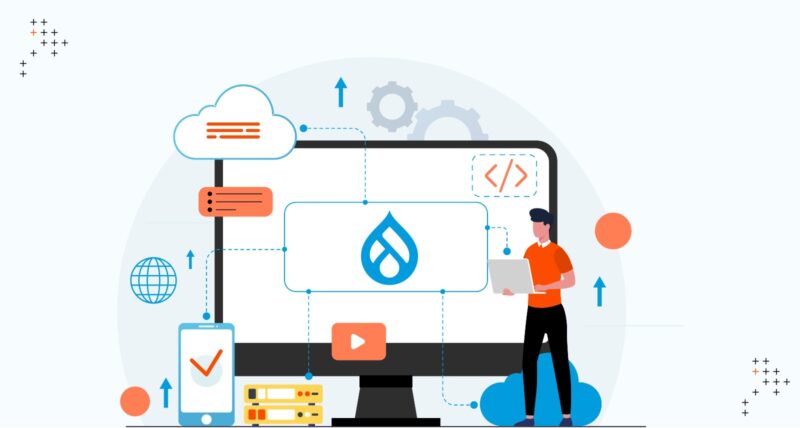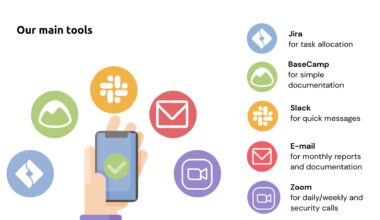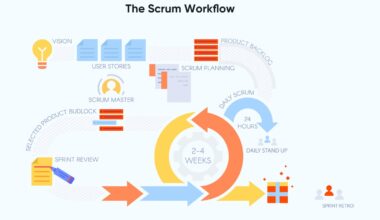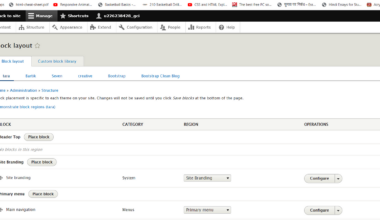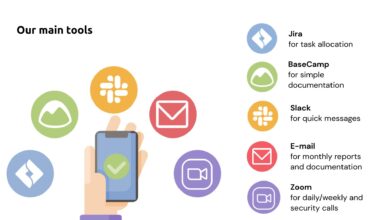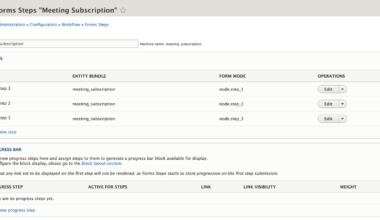Introduction to Drupal and Node.js
As a developer, I am always looking for new and innovative ways to build web applications. Recently, I came across Drupal and Node.js, two powerful tools that can work together to provide a flexible and scalable platform for building web applications.
Drupal is a content management system (CMS) that allows developers to easily create, manage, and publish content online. It has a large and active community of developers and users who contribute to its ongoing development and improvement.
Node.js, on the other hand, is a JavaScript runtime built on Chrome’s V8 JavaScript engine. It allows developers to build fast, scalable, and highly interactive web applications. It is particularly useful for building real-time applications that require constant communication between the server and the client.
When used together, Drupal and Node.js can provide a powerful and flexible platform for building web applications. Drupal can handle the content management and user authentication, while Node.js can handle the real-time communication and data processing.
One of the main benefits of using Drupal and Node.js together is that it allows developers to build highly scalable and flexible web applications. Drupal’s robust content management system can handle large amounts of data and traffic, while Node.js can handle the real-time communication and data processing that is required for many modern web applications.
Another benefit of using Drupal and Node.js together is that it allows developers to build applications that are highly modular and customizable. Drupal’s modular architecture allows developers to easily add and remove functionality as needed, while Node.js’s flexible JavaScript environment allows for easy customization and extension.
In the next section, we will explore how Drupal and Node.js can be integrated to build real-time applications.
Benefits of using Drupal and Node.js together
There are numerous benefits to using Drupal and Node.js together for building web applications. Below are some of the key advantages of using these tools in combination:
Scalability:
Drupal and Node.js together provide a highly scalable platform for building web applications. Drupal’s robust content management system can handle large amounts of data and traffic, while Node.js can handle the real-time communication and data processing that is required for many modern web applications. Using these tools together allows developers to build applications that can handle increasing amounts of traffic and data, without sacrificing performance.
Flexibility:
The combination of Drupal and Node.js provides a high degree of flexibility for building web applications. Drupal’s modular architecture allows developers to easily add and remove functionality as needed, while Node.js’s flexible JavaScript environment allows for easy customization and extension. This flexibility allows developers to build applications that can be easily adapted to changing business requirements and user needs.
Real-time communication:
Node.js is particularly useful for building real-time applications that require constant communication between the server and the client. When used with Drupal, Node.js can handle the real-time communication and data processing, while Drupal can handle the content management and user authentication. This combination allows developers to build applications that can deliver real-time updates and notifications to users.
Community support:
Both Drupal and Node.js have large and active communities of developers and users who contribute to their ongoing development and improvement. Using these tools together provides access to a wealth of knowledge, resources, and support from the broader community.
Cost-effective:
Using Drupal and Node.js together can be a cost-effective solution for building web applications. Both tools are open source and free to use, which can help to reduce development costs. Additionally, the flexibility and scalability provided by this combination can help to minimize long-term maintenance and upgrade costs.
Overall, the combination of Drupal and Node.js provides a powerful and flexible platform for building web applications. This combination allows developers to build applications that are highly scalable, modular, and customizable, with real-time communication capabilities. The benefits of using these tools together make them an attractive option for building modern web applications.
Integrating Drupal and Node.js for real-time applications
Integrating Drupal and Node.js can provide developers with the ability to create real-time applications that can handle large amounts of data and traffic. Real-time applications require constant communication between the server and the client, which is where Node.js comes in.
One of the ways to integrate Drupal and Node.js is through the use of the Node.js module called “Drupal Node.js.” This module allows developers to easily connect Drupal with Node.js, and provides a range of functionality, including real-time updates, notifications, and data processing.
To get started with integrating Drupal and Node.js for real-time applications, follow the steps below:
1. Install the Drupal Node.js module:
Using the Drupal Node.js module is the easiest way to integrate Drupal with Node.js. To install this module, go to the Drupal website and download the module. Once downloaded, follow the installation instructions provided by Drupal to install the module on your website.
2. Set up a Node.js server:
To use Node.js with Drupal, you will need to set up a Node.js server. This server will handle the real-time communication between the server and the client. To set up a Node.js server, download and install Node.js on your computer. Once installed, you can create a new Node.js project and start building your real-time application.
3. Connect Drupal to Node.js:
To connect Drupal to Node.js, you will need to configure the Drupal Node.js module. This module provides a range of settings that can be customized to your specific needs. These settings include the Node.js server URL, the content types to be served by Node.js, and the authentication settings.
4. Build your real-time application:
Once you have connected Drupal to Node.js, you can start building your real-time application. This application can include features such as real-time updates, notifications, and data processing. Node.js provides a range of tools and libraries that can be used to build these features, including Socket.io and Express.js.
Integrating Drupal and Node.js for real-time applications can provide developers with a powerful and flexible platform for building modern web applications. By following the steps above, you can get started with integrating these tools and building your own real-time application.
Examples of successful Drupal and Node.js projects
Drupal and Node.js have been used together in various successful web development projects. Below are some examples of successful projects that have leveraged the power and flexibility of Drupal and Node.js.
1. Acquia Lift
Acquia Lift is a personalization platform that allows marketers to deliver targeted content to website visitors. It is built on Drupal and Node.js, and provides real-time personalization capabilities. The platform uses Node.js for real-time data processing and communication, while Drupal handles the content management and user authentication.
2. Red Hat Summit
Red Hat Summit is an annual conference for developers and IT professionals. The conference website is built on Drupal and Node.js, and provides real-time updates and notifications to attendees. Node.js is used for real-time communication and data processing, while Drupal handles the content management and user authentication.
3. NBC Olympics
The NBC Olympics website for the 2016 Summer Olympics in Rio de Janeiro was built on Drupal and Node.js. The website provided real-time updates and results for the various Olympic events. Node.js was used for real-time communication and data processing, while Drupal handled the content management and user authentication.
4. Weather.com
Weather.com is a popular weather website that provides real-time weather updates and forecasts. The website is built on Drupal and Node.js, and uses Node.js for real-time data processing and communication. Drupal handles the content management and user authentication.
5. Gatsby
Gatsby is a static site generator that is built on Node.js and uses Drupal as a headless CMS. The platform allows developers to build fast and scalable websites that are optimized for search engines. Drupal provides the content management capabilities, while Node.js is used for data processing and communication.
These successful Drupal and Node.js projects demonstrate the power and flexibility of using these tools together. They provide real-time communication and data processing capabilities, while also allowing for highly scalable and modular web development. As more developers discover the benefits of using Drupal and Node.js together, we can expect to see even more successful web development projects in the future.
Final thought: The future of Drupal and Node.js in web development
The combination of Drupal and Node.js provides a powerful and flexible platform for building modern web applications. As technology continues to evolve, we can expect to see even more opportunities for these tools to shine in web development.
One of the key areas where Drupal and Node.js are expected to play a major role is in the development of headless CMS applications. Headless CMS applications allow developers to separate the content management system from the front-end presentation layer, providing more flexibility and customization options. Drupal’s robust content management capabilities and Node.js’s flexible JavaScript environment make them an ideal combination for building headless CMS applications.
Another area where Drupal and Node.js are expected to make an impact is in the development of real-time applications. Real-time applications are becoming increasingly popular, as users expect to receive updates and notifications in real-time. Drupal and Node.js together provide a scalable and flexible platform for building real-time applications that can handle large amounts of data and traffic.
Finally, the community support for both Drupal and Node.js continues to grow, providing even more resources and support for developers who choose to use these tools. The large and active communities of developers and users contribute to ongoing development and improvement, ensuring that Drupal and Node.js continue to evolve to meet the needs of modern web development.
In conclusion, the future of Drupal and Node.js in web development is bright. As these tools continue to evolve and improve, they will provide even more opportunities for developers to build flexible, scalable, and highly interactive web applications. Whether you are building a headless CMS application or a real-time application, Drupal and Node.js are a powerful combination that can help you achieve your goals.
